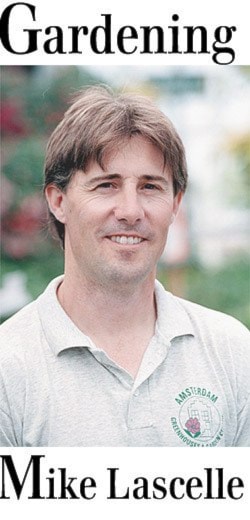No matter where I go, there’s always a part of me that remains a gardener.
So when I took a short vacation to Vancouver Island recently, it wasn’t too surprising that there were a few plant-inspired epiphanies, most of which involved the ever-adapting flora.
We began our trip with a return visit to the Horne Lake cave system, just north of Nanaimo. As we hiked up the hill towards the cave entrance, the surrounding forest drastically changed to a thin understory with a few sword ferns and huckleberries (Vaccinium parvifolium), with stunted trees leaning at various angles. This shift was much in part to the rocky, shallow soils and, in some spots, to caverns just feet below the surface.
My two eldest daughters and I did the extreme tour, which involved crawling through narrow passages on your stomach and making a seven-storey repel down the pitch black ‘Rain Barrel’. The pristine calcite formations were utterly breathtaking down there (especially the China Shop), but it was when we reached the end of Riverbend Cave that Mother Nature really impressed me.
After two and a half hours, we were 276 metres into the mountain and 68 metres deep – the cave terminates with rocks that are deposited there by the underground river, but when I looked around at the walls around me, they were literally plastered with small seed cones and conifer needles that had followed the water’s course.
The next day (after a long session in the hot tub to heal the aches and bruises), we went on a fossil-hunting tour with the Courtenay Museum and Palaeontology Centre on the nearby Trent River. A quick hike through dense coastal forests down to the steeply sided river below revealed that all these native trees, shrubs and perennials are actually growing on an ancient Upper Cretaceous seabed that dates from 65 to 90 million years ago.
Some of the finds of the day included Ammonites, fish scales and various fossilized shells – so we were able to bring home a few souvenirs.
We travelled across island in order to reach our next destination in Ucluelet, but made a stop in Cathedral Grove Provincial Park at the halfway point. This pristine old-growth forest was preserved so that we can all have a glimpse back in time. The trails allow you to walk right up to some of these 800-year-old giants, including one Douglas Fir (Pseudotsuga menziesii) that is nine metres in circumference. The scale here is so massive that one quickly forgets that a highway divides the park, because everyone is busy looking straight up. It’s almost like you’re walking through an Emily Carr painting: there’s a sort of reverence that you see expressed on every face that passes by, like one sees at an art gallery.
The next morning we went beachcombing in Ucluelet and had an impromptu botanical lesson from my daughter Rochelle, who has been studying marine flora at UBC. There is every colour of the rainbow here, from enormous bulbous whips of golden Bull Kelp, delicate bright pink Coralline Algae, gelatinous dark purple Turkish Towels (Gigartina) and yellowish-green baubles of Rockweed or Fucus. The afternoon surfing was great (meaning that I actually managed to stand on the board a few times), but I couldn’t help but notice the sculpted forest at the edge of the sands at Wickaninnish Beach. Coastal winds get so strong here that the forest looks like it has been literally sheared off by a giant machete into an almost perfect wedge shape, with fantastically twisted spruce and a dense, tangled understory.
On our last day, we spent some time hiking the boardwalks through the Shorepine Bog Trail, where stunted Pinus contorta struggle to survive, while true wetland species such as Labrador tea (Ledum), Sweet Gale (Myrica) and Bog Laurel (Kalmia polifolia) thrive. Another bog inhabitant is the carnivorous Sundew, or Drosera rotundifolia, which feeds on mosquitos and flies, rather than depending on the nutrient poor peat.
So it seemed that no matter where we went on vacation, Mother Nature always found a way to impress this gardener.
Mike Lascelle is a local nursery manager and gardening author (hebe_acer@hotmail.com).
